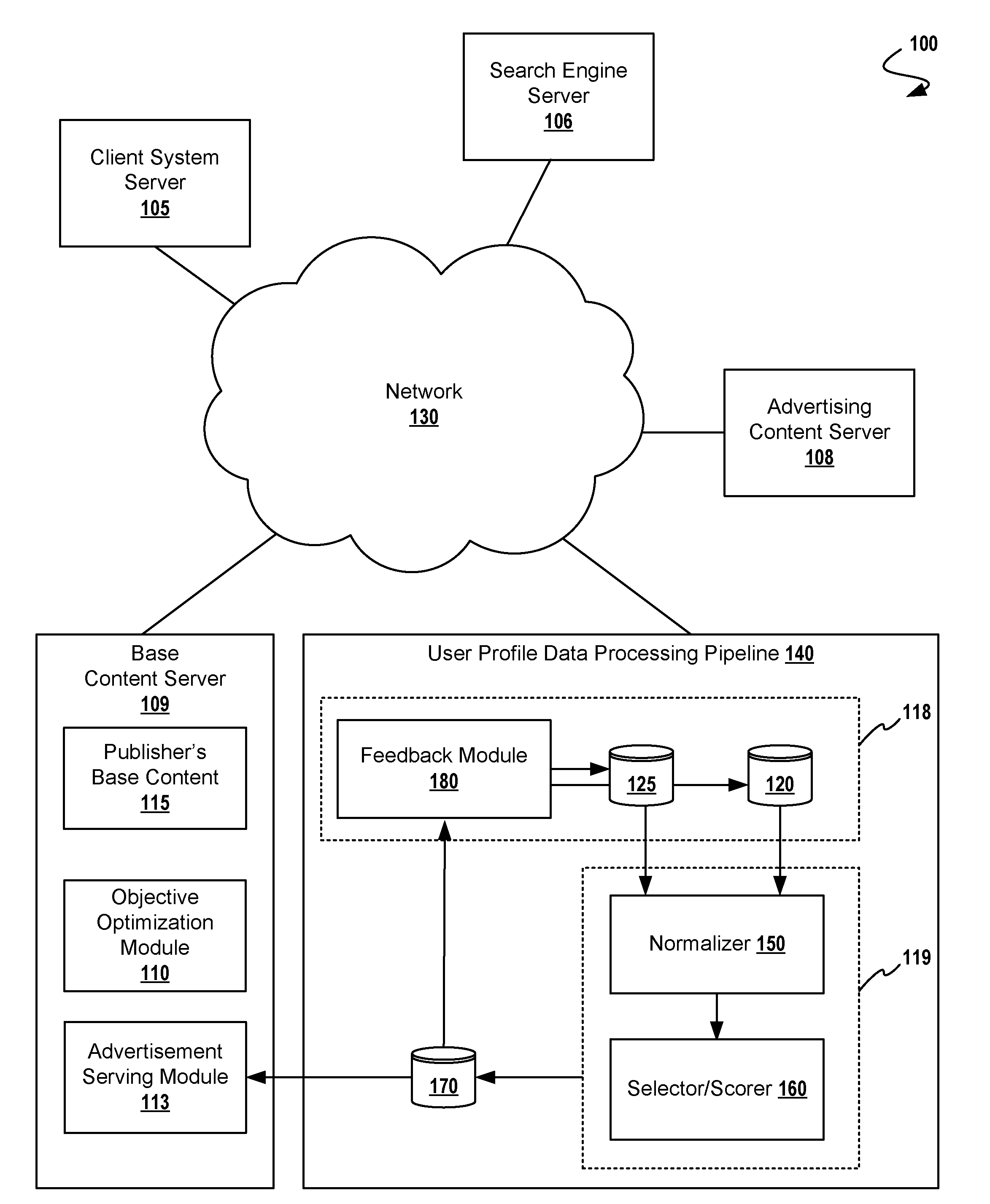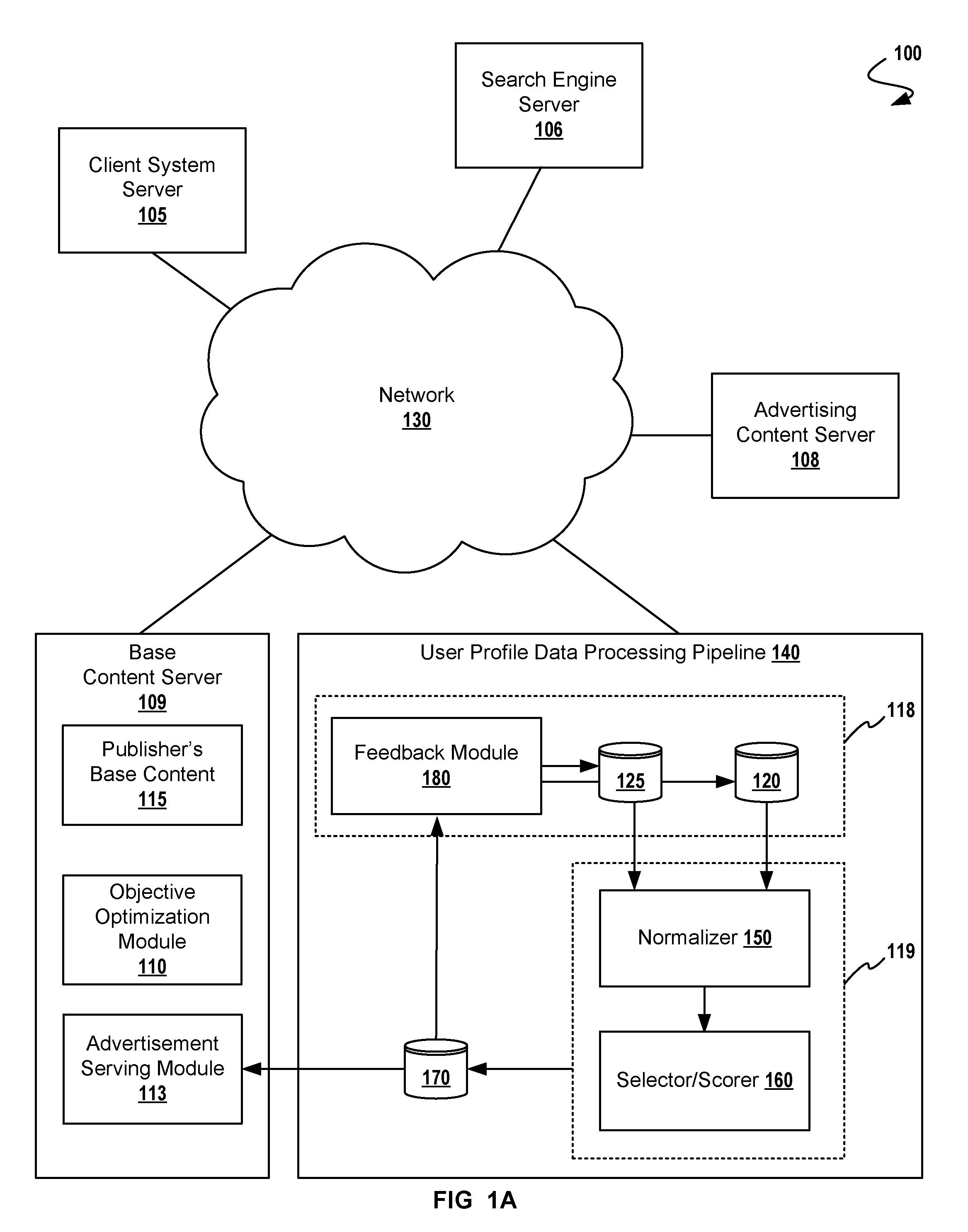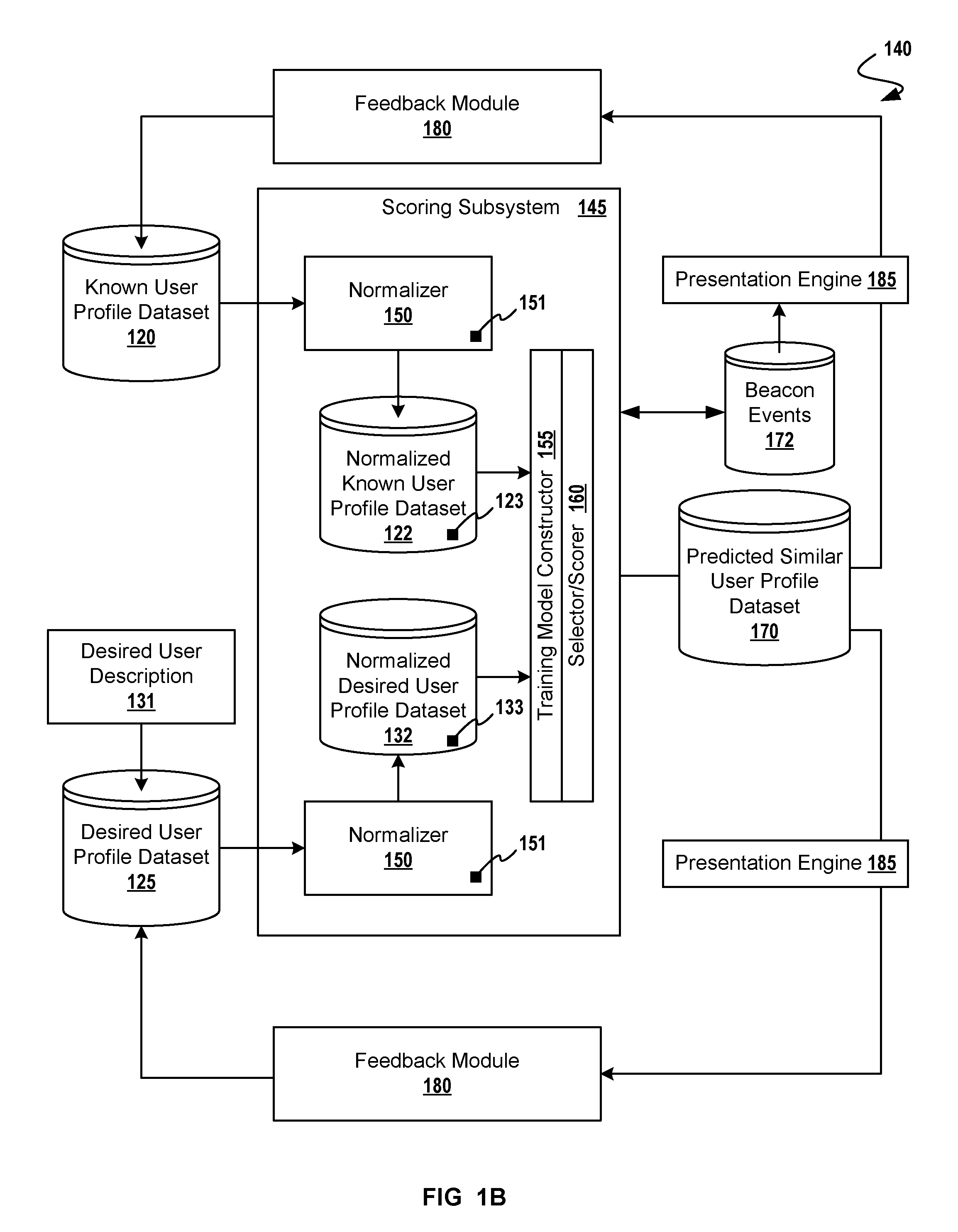Adaptive Targeting for Finding Look-Alike Users
a technology for users and advertisers, applied in the field of user modeling techniques for targeting users, can solve the problems of advertisers being unable to reach users, unable to meet user needs,
- Summary
- Abstract
- Description
- Claims
- Application Information
AI Technical Summary
Problems solved by technology
Method used
Image
Examples
Embodiment Construction
[0017]In the following description, numerous details are set forth for purpose of explanation. However, one of ordinary skill in the art will realize that the invention may be practiced without the use of these specific details. In other instances, well-known structures and devices are shown in block diagram form in order to not obscure the description of the invention with unnecessary detail.
INTRODUCTION
[0018]Instead of a clearly definable but overly general segment definition, advertisers can now think of their users as more specific but less well-defined groups. That is, instead of “males between 25 and 34”, advertisers can target people who possess finely-tuned characteristics. For example, an advertiser might want to target finely tuned segments of the population, such as “outdoor enthusiasts with a discriminating taste, who might appreciate the high-end sporting goods offered by a large retail chain”. Or, even more likely, an advertiser might provide a database of users (e.g. ...
PUM
 Login to View More
Login to View More Abstract
Description
Claims
Application Information
 Login to View More
Login to View More - R&D
- Intellectual Property
- Life Sciences
- Materials
- Tech Scout
- Unparalleled Data Quality
- Higher Quality Content
- 60% Fewer Hallucinations
Browse by: Latest US Patents, China's latest patents, Technical Efficacy Thesaurus, Application Domain, Technology Topic, Popular Technical Reports.
© 2025 PatSnap. All rights reserved.Legal|Privacy policy|Modern Slavery Act Transparency Statement|Sitemap|About US| Contact US: help@patsnap.com



